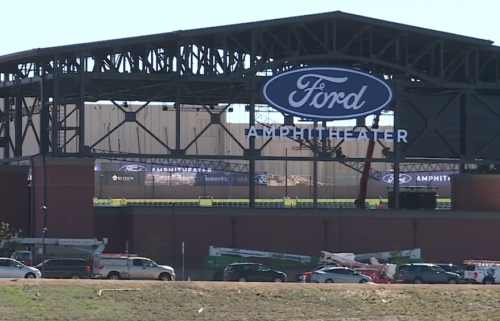Behind the scenes at the Westminster Dog Show

The inner workings of the Westminster Kennel Club Dog Show are all bark and no bite — mostly.
On Sunday, a fluffy little Pekingese named Wasabi won Best in Show at the 145th annual event at the Lyndhurst Estate in Tarrytown, New York, with his breeder, David Fitzpatrick, promising that the top dog was going to be treated to a filet mignon for taking home the top prize.
“He has that little extra something, that little sparkle that sets a dog apart,” Fitzpatrick said, adding that “he deserves his own chariot.”
Not unusual talk in the Westminster world.
The doggie extravaganza is the second-oldest continuous sporting event in the United States, after the Kentucky Derby, and is also the longest nationally televised live dog show, according to the Westminster Kennel Club.
Many people love dogs, of course, but, apparently, they also love watching people treat the sport so seriously.
Westminster’s resident show expert and former judge Gail Miller Bisher has more than 35 years of experience in the sport as a handler, breeder, trainer and spokesperson. She told CNN that Westminster is a way of life for people involved in the sport — and behind the scenes it isn’t all that different from the cult classic 2000 film, “Best in Show.”
“People in the sport love the movie ‘Best in Show.’ It is a satire and it’s very funny,” Bisher laughed. “One of the positives of our sport is that it’s such a community and we really have people from all walks of life. You can have a CEO of a corporation competing with a retired school teacher.”
Bisher’s parents were breeders and from a young age she was grooming, training, conditioning and handling all types of dogs. She can rattle off facts about any breed you throw at her.
“Each breed has a written standard that explains what the features are of that breed. It’s very specific. It can be about shape of the eye, the eye color, the coat texture, the length of tail,” she explained. “I mean, it’s very specific about the spring of rib cage and all of those aspects are based on what the breed was originally bred to do, what its function was. This is what the judging is based on. The judges studied the written standard, and then they’re comparing the dogs to see who most closely conforms to that written standard.”
Bisher said while she is aware and understands concerns about dog breeding, responsible breeding is about preservation.
“It’s more about preserving the breeds as they were meant to be in history, like some blood hounds are still working, they are still working in our communities today,” she said. “The predictability of a purebred dog is what the advantage really is because that’s why when you have a dog that has to work, whether it’s for the sight impaired or a medical alert dog or a bomb-sniffing dog or now we have Covid-sniffing dog, any of those jobs, purebred dogs are selected for those jobs. And that is because of their predictability, you know what you’re going to get, you know the temperament, you know the work ethic because those are traits that are continued on.”
“The goal is to make the breed as healthy as it can be. The goal is not to continue genetic issues. So that that’s a big part of it that people don’t necessarily understand it,” Bisher added. “The other element is that breed clubs, like The Basset Hound Club of America, every breed has a parent club, and those parent clubs, their main goal is the welfare and protection of the breed.”
Part of holding the Westminster show is to educate the public, Bisher said. Backstage, the breeds are all categorized with experts on hand to explain the various dog breeds and traits.
“When the public comes to the dog show, they can peruse the aisles, see all of the different breeds, touch them, pet them, learn about them from breeders and owners and handlers before bringing a dog into your home,” Bisher explained. “Yes, there’s a competition and these are competitive dogs that are there to compete, but they’re [handlers] are also there to talk to the public and represent their breeds and try and help people find the right breed for their lifestyle.”
As for behind the scenes show drama that has been satirized in entertainment, Bisher said most people compete purely for their passion for dogs and the hopes of a title.
“Everyone wants to win. Absolutely. I mean, I would say everyone is serious in the ring, but outside the ring, we definitely are a community,” she said. “If anyone needs help, other dog people will definitely, always help that person. But inside the ring, yeah, it gets competitive. Everyone is there for a reason”
That reason? The bragging rights to the Best in Show title. And for Wasabi, a filet mignon.
Here are the 2021 group winners:
Before a dog can be selected as Best in Show, it must win Best of Breed and then the group category.
Hound Group — Bourbon the whippet, who won the reserve slot, or runner-up
Toy Group — Wasabi the Pekingese, who won Best in Show
Non-Sporting Group — Mathew the French bulldog
Herding Group — Connor the Old English sheepdog
Sporting Group — Jade the German shorthaired pointer, whose mother, CJ, was crowned Best in Show in 2016
Working Group — Striker the Samoyed
Terrier Group — Boy the West Highland white terrier



